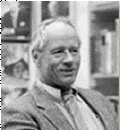Richard B. Frank
Richard B. Frank is a historian and one of the leading authorities on the Asian theater of World War II. His books include Guadalcanal: The Definitive Account of the Landmark Battle, which won the Wallace M. Greene Award from the U.S. Marine Corps; Downfall: The End of the Imperial Japanese Empire; MacArthur, a short biography of the general; and his latest, Tower of Skulls: A History of the Asia-Pacific War, a planned trilogy, the first volume of which came out in 2020.
Originally from Missouri, Frank served for four years in Vietnam as a rifle platoon leader with the 101st Airborne Division. He is a graduate of the University of Missouri (1969) and Georgetown University Law Center (1976).






